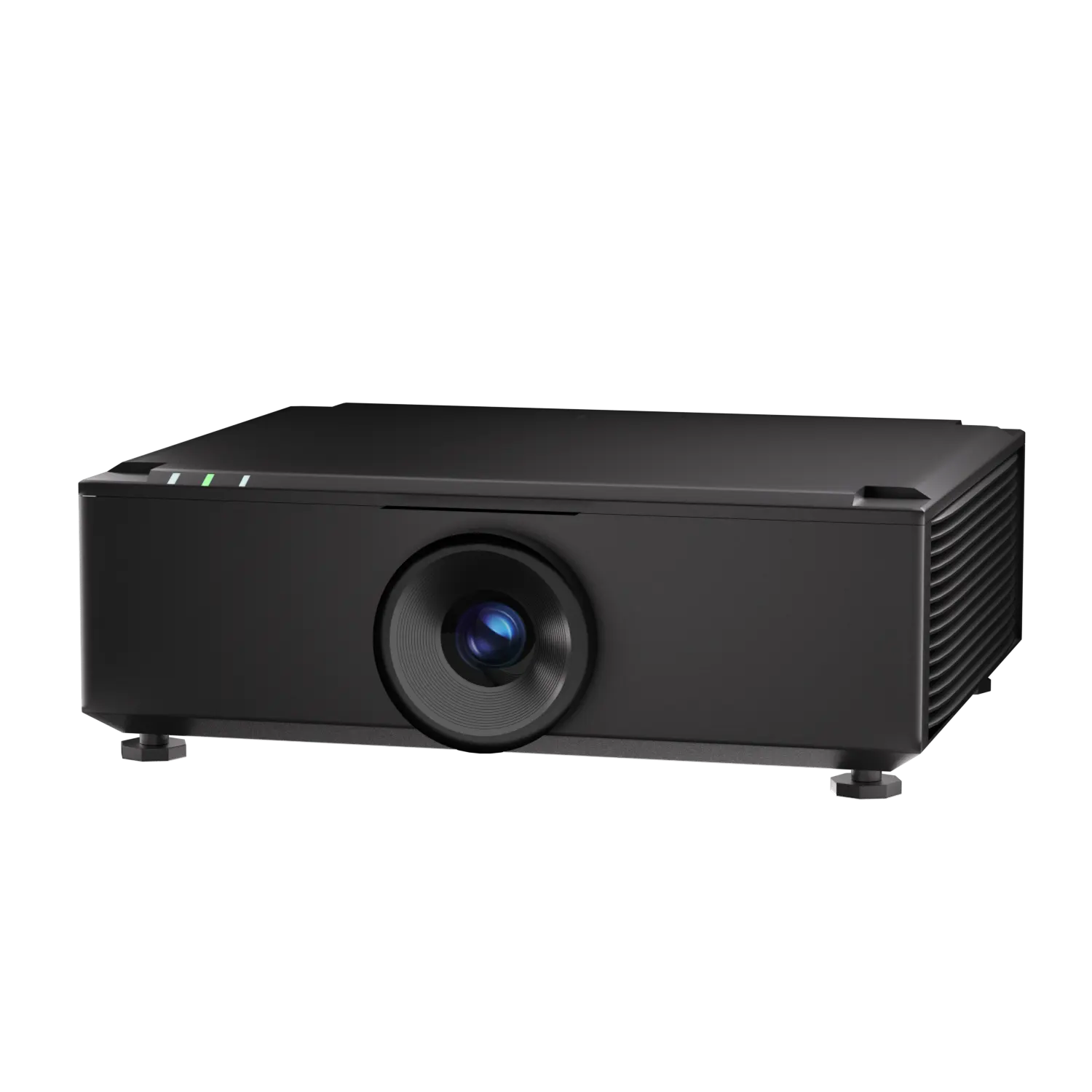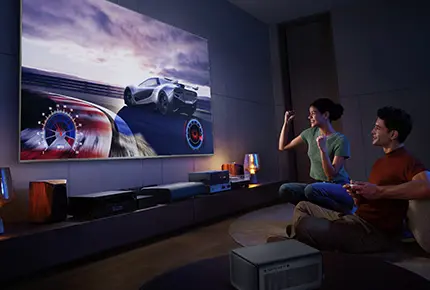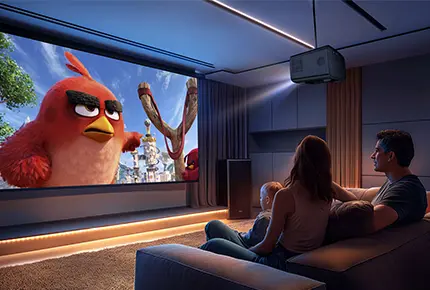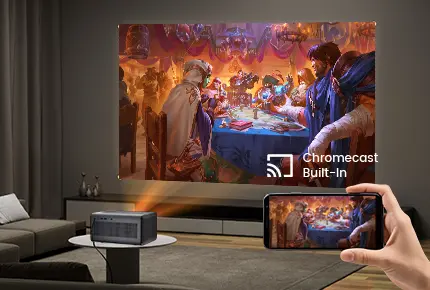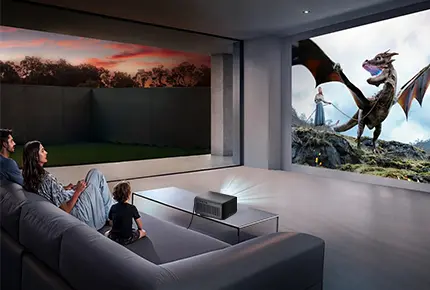Grey and white projector screens exhibit significant differences in performance, applicable scenarios, and visual effects. Below is a detailed comparison and selection guide:
Core Differences
Reflectivity & Brightness
White Screen: Higher reflectivity (gain ~1.0), reflecting nearly all light for brighter, more vibrant colors. Ideal for high-brightness scenarios.
Grey Screen: Lower reflectivity, absorbing ambient light to enhance black levels but reducing overall brightness by ~20%.
Contrast & Ambient Light Resistance
Grey screens mitigate ambient light interference, deepening blacks and improving contrast, making them suitable for partially lit environments (e.g., living rooms).
White screens deliver more transparent colors in dark rooms but are prone to washout from ambient light reflections.
Color Temperature & Accuracy
Both screens can achieve accurate color temperatures (e.g., 6500K) through projector calibration. Grey screens may appear “dull” due to lower brightness but do not inherently distort colors.
White screens offer more direct color reproduction, ideal for standard color gamut needs.
Viewing Angle & Projector Compatibility
White screens have wider viewing angles and suit all projectors. Grey screens (especially metal-coated ones) may narrow viewing angles and are less compatible with ultra-short-throw projectors.
How to Choose?
Based on Ambient Light
Fully Controlled Darkness (e.g., dedicated home theaters): Prioritize white screens for maximum brightness and color vibrancy.
Ambient Light Present (e.g., living rooms/daytime use): Gray screens excel in reducing reflections and improving clarity.
Projector Performance Matching
Low-brightness projectors (<1000 ANSI lumens) should avoid gray screens to prevent further brightness loss, especially for 3D content.
High-brightness projectors paired with gray screens balance contrast and brightness trade-offs.
Room Decor & Usage
Dark-colored rooms (black walls/furniture) pair well with white screens; light-colored rooms benefit from gray screens to offset reflections.
For temporary setups or budget constraints, a white wall can substitute a white screen if kept clean.
Generally, There is no absolute “better” option—selection depends on usage scenarios:
Choose White Screens: Dark rooms, high color accuracy needs, low-brightness projectors.
Choose Grey Screens: Ambient light interference, high contrast demands, high-brightness projectors.

